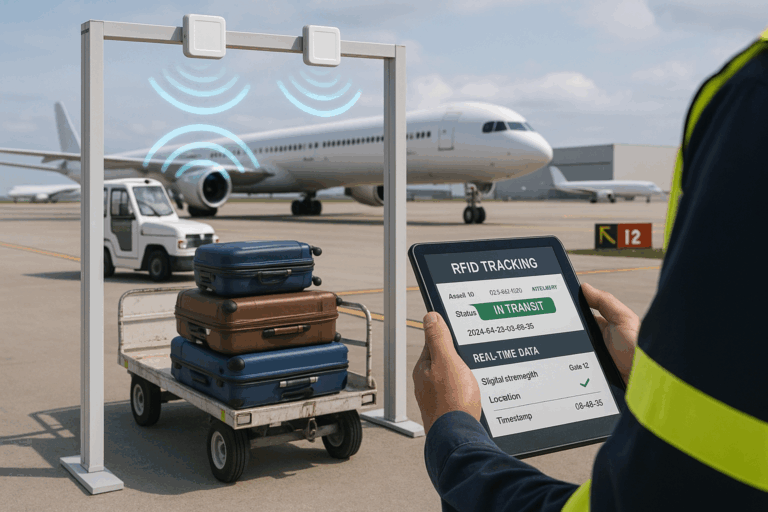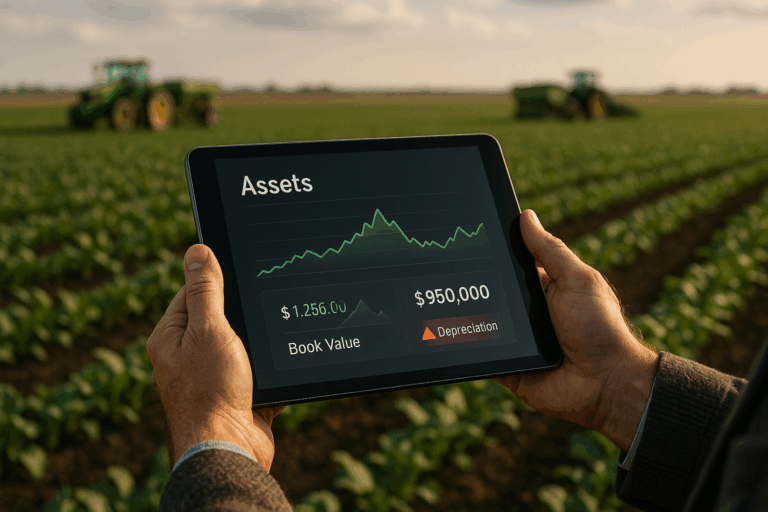With the expansion of the international market in which several companies left their native countries to enter other borders, it became necessary to standardize accounting and its elements. There are several important concepts for accounting, among them is Leasing. The one that uses IFRS 16 as a source of information for its accounting treatment.
Leasing works as an act of leasing that is characterized by being the way to finance the purchase of assets. In other words, a lease is usually a legal contract that binds two parties: the lessor and the lessee.
In that lease, there is always an asset that your lessor, or landlord, leases to the lessee. This means that the landlord is the one who owns the property and the tenant who will use it under a contract.
Leases are verbal and written agreements. Both parties agree to the terms of the contract, including the amount of the lease and the duration of the lease. As well as any consequences that may result if either party fails to comply with the terms and conditions of the contract.
Therefore, a lease is a business process that serves to obtain that culminates in the use of certain fixed assets. And to obtain them, the company must pay certain amounts to the owner of that asset as contractual, periodic and tax-deductible payments.
Leasing is an important tool for the accounting market, as it not only has the potential for savings. But it can be the key to bringing extra capital investment into the business that might otherwise not be available.
Therefore, it was necessary for an international accounting standard to be established to guide leases. Thus, in 2016, IFRS 16 – Leases appeared.
Leasing is a form of financial activity associated with the transfer of capital goods from a lessor to a lessee. And that for temporary use for a defined time upon payment.
IFRS 16 – Leasing is the international accounting standard responsible for informing on the accounting treatment of leases.
Regarding accounting, IFRS 16 provides a single accounting model. This requires lessees to recognize assets and liabilities for all leases unless the lease term is 12 months or less. Or the underlying asset has a low value.
A lease agreement is a document that passes control of the use of an asset between parties for a period of time. And that for a payment.
The most common contracts are those for renting real estate. Those that need to contain certain data obligatorily.
IFRS 16 uses the cost model to measure leases.
The lease liability is measured at its initial value and may be remeasured.
The right-of-use model is the biggest change between IFRS 16 and IAS 17. Under this model, there is only one way of accounting for leases, not two.
Table of Contents
ToggleIFRS 16 – Leases summary
In 2001, the IASB approved IAS 17 – Leases, which had been originally issued by the IASC in December 1997. With the change in the responsible bodies and the new accounting standards, which became IFRS, in 2016 this IAS was updated and changed from name for IFRS 16 – Leasing.
IFRS 16 must be used for annual reporting periods from January 1, 2019. In addition, the objective of this IFRS is to report everything that is related and faithfully represents the lease transactions.
As well as providing a basis for financial statement users to assess the amount, timing and uncertainty of cash flows arising from leases. To achieve this objective, a lessee must recognize assets and liabilities arising from a lease.
Therefore, IFRS 16 introduces a single accounting model for leases that require a lessee. This must recognize assets and liabilities for all leases with a term greater than 12 months unless the underlying asset is of low value.
IFRS 16 specifies how a manager will recognize, measure, present and disclose lease agreements.
What is IFRS – International Financial Resetting Standards?
IFRS is the acronym for International Financial Reporting Standards, which can be translated to “International Accounting Standards.” Thus, the IFRS are a set of accounting rules for the financial statements of companies that aim to make them consistent, transparent and easily comparable throughout the world.
Currently, IFRS operates in approximately 167 jurisdictions, including those in the European Union. Furthermore, it is the International Accounting Standards Board (IASB) that issues the IFRS. The International Accounting Standards Board (IASB) is an independent private sector body whose mission is to develop and approve globally applicable and globally accepted International Financial Reporting Standards.
The IASB operates under the supervision of the IFRS Foundation, as it was founded in 2001 to replace the IASC (International Accounting Standards Committee).
Under the terms of the IFRS Foundation Constitution, the IASB has full responsibility for technical matters:
Approve and issue interpretations deliberated by the Committee;
Prepare and issue standards and exhibition projects, in accordance with the stipulated methodology;
Discretionary power in developing your technical agenda, subject to consultation requirements with curators and the public.
IFRS accounting standards are sometimes confused with International Accounting Standards (IAS), which are the older standards that IFRS replaced in 2001.
What is Leasing?
According to IFRS 16, leasing, also known as leasing, is a contract for the purchase of an asset by the lessee to rent to the customer for a specified period.
Thus, leasing can be defined as an agreement between the lessor (owner of the asset) and the lessee (user of the asset). By which the lessor owns an asset and allows the lessee to use it in exchange for periodic payments.
These payments are called lease rents or minimum lease payments (MLP). So leasing is beneficial for both parties to enjoy tax benefits or do tax planning. Which makes leases the most preferred source of asset finance of late.
At the end of the lease period, the asset reverts to the lessor in the absence of any other provision in the contract regarding the extension of the asset by the lessee.
Example of Leasing
A customer wants to lease a car because he wants to change make/model every 2 years. It informs which car you want to lease to the company that will lease/lease the asset. The fixed asset (car) is then acquired by the company and leased for a specified period (2 years) to the customer; he then pays the monthly installments (liabilities) referring to the monthly rent.
But what is IFRS 16 – Leases?
IFRS 16 – Leasing is a standard defined by the IASB that aims to require that all leasing contracts be reported in a company’s balance sheet as assets and liabilities. Thus, bringing significant changes in the accounting of leasing, translating into transparency in accounting controls.
Therefore, IFRS 16 establishes principles for the recognition, measurement, presentation, and disclosure of leases. And this with the aim of ensuring that tenants and landlords provide relevant information that faithfully represents these transactions.
In this way, these contracts have a legal and binding character and establish the terms to make it possible to lease real estate and other assets. Under IFRS 16, these contracts stipulate the duties of each party to effect and maintain the agreement. Just as they are achievable by each one.
It is through a contract that control of an asset is transferred. Thus, the lessor has the right to direct the use of its asset to obtain all the economic benefits arising from this use.
How to determine the components of a lease?
Another piece of information that IFRS 16 provides is how to create a lease agreement. There are several types of contracts, including those that contain a lease component and additional lease components, but are not leases, such as the lease of an asset and the provision of a maintenance service.
IFRS 16 demonstrates that in these cases, lessees should consider paying based on standalone relative prices. Which are estimated if observable prices are not readily available.
In other cases, a lessee may choose, on a per underlying asset class basis, not to separate non-lease components from lease components. In order to describe all components like a lease.
There is a standard, IFRS 15, which postulates on contracts with customers. So your reading and understanding will help managers to create their lease agreements.
Example of a lease agreement
The most common examples of lease agreements are real estate rentals. These contracts must necessarily include:
- The address of the property;
- Responsibilities of Landlord and Tenant;
- The amount of rent;
- A security deposit required;
- Lease due date;
- Consequences for breach of contract;
- Length of lease;
- Other essential information.
Of course, not all leases are designed the same. However, several of them have characteristics in common, such as the value, due date and validity of the rent. In addition, every contract needs the tenant’s signature to assure the landlord that the former agrees and will comply with the terms before occupying the property.
Therefore, a contract will always describe the terms under which the parties agree to lease an asset. And it guarantees the lessee, also known as the tenant, the use of the property. It also guarantees the landlord regular payments for a specified period in return.
Both landlord and landlord face consequences if they fail to comply with the terms of the lease. Since a lease agreement is a form of intangible right.
Application of IFRS 16
IFRS 16 applies to all types of leases, including sub-leases. However, there are some exceptions to which this rule does not apply. Are they:
Leases aimed at the exploration or use of non-renewable resources. Like, for example, oil, minerals and natural gas;
Leases of biological assets (IAS 41);
Service concession agreements (IFRS 12);
Intellectual property licenses (IFRS 15);
Rights obtained under licensing agreements for intangible assets (IAS 38).
Therefore, to verify whether a contract refers to a lease, the company and its managers must assess the lease. In addition to verifying whether it refers to an asset and whether it will flow in economic benefits from the use of that asset. Also, the lessee can apply IFRS 16 for leases of intangible assets.
Lease types
Under IFRS 16, in relation to payments, a lessee has the option to make lease payments as an expense. That is, straight through the lease term or otherwise. And that for the two types of lease which are:
Leases with a lease term of 12 years or less. But that do not have purchase options;
Leases where the underlying asset, when acquired, has a low value.
Accounting for rent by tenants
Lessee is the natural or legal person who will lease the asset. Thus, in order for the lessee to account for this asset, at the beginning of the lease, he needs to recognize a right-of-use asset and a lease liability.
This asset is initially measured at the value of the lease liability plus any initial direct costs incurred. Accordingly, there may be some adjustments for lease incentives, for early or early payments, and restoration or similar obligations.
But another form of measurement occurs when the lease begins. Because the measurement of the asset by the lessee shall be by the cost model, unless:
The asset is investment property and the lessee values its investment property in accordance with IAS 40;
Asset refers to a class of property, plant and equipment to which the lessee applies the IAS 16 revaluation model.
Cost model
The cost model is a method for determining the total amount a company has invested to deliver a product or service. The structure of this template may vary depending on the situation, but the purpose of this template is always the same.
Thus, for IFRS 16, its purpose is to find an accurate way to evaluate the input values to be possible a comparison with the output value. By using this model, the manager will be able to assess the potential of his company and estimate its profitability.
According to this model, the measurement of an asset is at its cost less accumulated depreciation. In addition to the impairment that is also accumulated.
Lease liability
The lease liability, which is all the lessee’s payment obligations to the lessor during the lease period, is measured at the present value of the payments. And this during the period in which the lease occurred with the discount of the implicit rate of this action, if it can be determined.
However, under IFRS 16, if there is no way to determine this rate, the lessee will need to use its incremental borrowing rate. And the payments of this lease that depend on the rates are measured, in the initial period of the liability, by the initial rate.
Thus, lease payments existing in the contract need to be reported as a lease liability. And that’s on the company’s balance sheet.
Revaluation
Some lease liabilities need a revaluation because they present changes in their constitution, if the changes are the following:
Use of a revised discount rate as a call option valuation;
Expected to have amounts payable with residual value guarantees;
Future lease payments that resulted from a change in the rates used to determine them.
Also, in accordance with IFRS 16, changes in leases may result in remeasurements of liabilities A unless the company considers them as separate leases.
When was IFRS 16 published?
IFRS 16 – Leasing was issued in January 2016 and has been around since the beginning of 2019, on January 1st, bringing significant changes to the leasing policy for companies.
What has changed with IFRS 16 framework?
IFRS 16 replaced the IAS 17 standard. The purpose of the replacement was to improve transparency in financial statements and require Leasing contracts to be reported in a company’s balance sheet as assets and liabilities.
As such, this international accounting standard is considered the most significant change in accounting for leases in over 30 years. Since, with its introduction in 2019, this new standard has affected most companies and their financial statements.
What was the previous standard to IFRS 16?
Standard IAS 17 – Leasing was applied on January 1, 2005 and was replaced by IFRS 16 – Leasing on January 1, 2019. This standard was intended to prescribe the accounting policies and disclosures applicable to finance and operating leases for lessees and lessors.
What is the difference between the IFRS 16 and IAS 17?
In the old standard, IAS 17, leases were classified into two types: finance leases and operating leases, and in IFRS 16 these types will be replaced by a single accounting model, in which lessees must recognize all leases in the balance sheet as a rightful asset of use against a “lease liability”.
Therefore, the big difference between the old and new standard is regarding the completely new approach to accounting for leases.
The single model that IFRS 16 demonstrates is the right-of-use model. This model posits that a company that controls or has the right to use a leased asset has that asset as a lease for accounting purposes. And, therefore, the company’s balance sheet needs to recognize and account for this lease.
Thus, IFRS 16 no longer allows the corporate balance sheet to exclude liabilities from its information. What happened with IAS 17 that allowed this action for operating leases.
Also, IFRS 16 demonstrates that most leased items must be characterized as an asset in the company’s balance sheets, following the new right-of-use model. For, according to this model, such a lease is to convey the right to control the use of an identified asset for a period of time in exchange for consideration.
This change occurred with the prerogative of ensuring that companies report information on all their leased assets in a standardized manner. In addition to providing transparency on the assets and liabilities of companies leasing.
Finance leases and operating leases
Amendments between IAS 17 and IFRS 16 apply to the accounting treatment of lease agreements. Previously, they were divided into finance leases and operating leases.
Under IAS 17, operating leases are generally not included on balance sheets. But their accountings took place through profit and loss accounts.
CPCON has assisted hundreds of clients with the implementation of the IFRS standards and development of asset management internal controls to satisfy regulatory compliance – regarding the IFRS 16.
Check out our article to learn more about unique asset management and valuation insights. Contact us to share your thoughts with our team of specialists. Or leave your comments below.



























